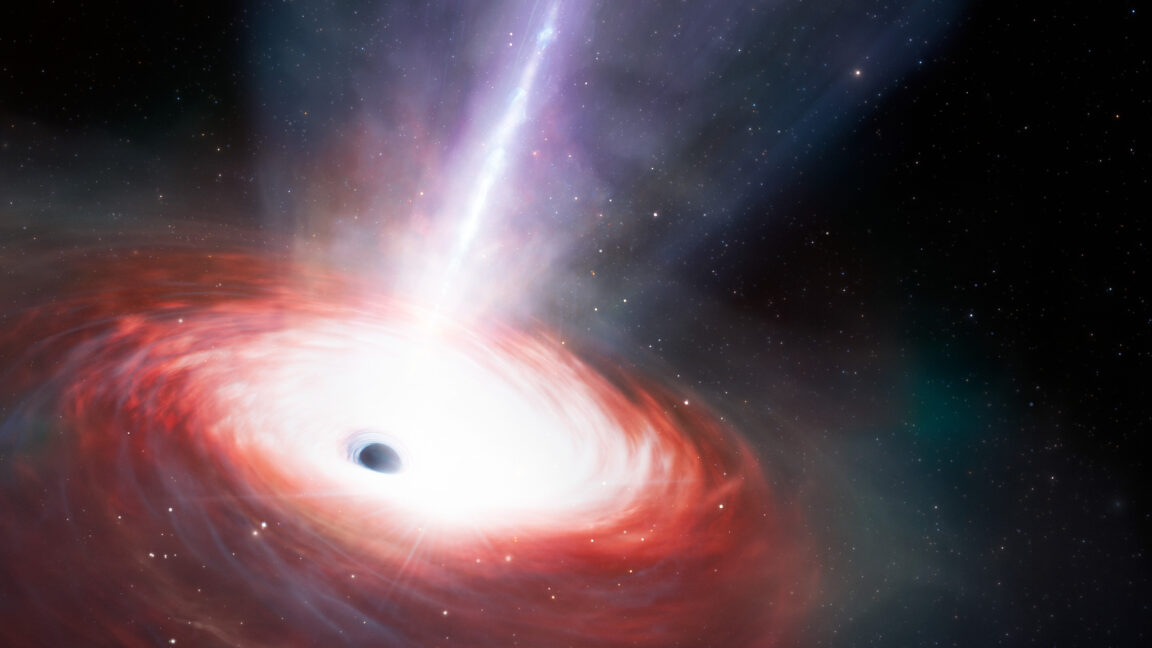
How did supermassive black holes end up at the center of every galaxy? A while back, it wasn’t that hard to explain: That’s where the highest concentration of matter is, and the black holes had billions of years to feed on it. But as we’ve looked ever deeper into the Universe’s history, we keep finding supermassive black holes, which shortens the timeline for their formation. Rather than making a leisurely meal of nearby matter, these black holes have gorged themselves in a feeding frenzy.
With the advent of the Webb Space Telescope, the problem has pushed up against theoretical limits. The matter falling into a black hole generates radiation, with faster feeding meaning more radiation. And that radiation can drive off nearby matter, choking off the black hole’s food supply. That sets a limit on how fast black holes can grow unless matter is somehow fed directly into them. The Webb was used to identify early supermassive black holes that needed to have been pushing against the limit for their entire existence.
But the Webb may have just identified a solution to the dilemma as well. It has spotted a black hole that appears to have been feeding at 40 times the theoretical limit for millions of years, allowing growth at a pace sufficient to build a supermassive black hole.
Setting limits
Matter falling into a black hole generally gathers into what’s called an accretion disk, orbiting the body and heating up due to collisions with the rest of the disk, all while losing energy in the form of radiation. Eventually, if enough energy is lost, the material falls into the black hole. The more matter there is, the brighter the accretion disk gets, and the more matter that gets driven off before it can fall in. The point where the radiation pressure drives away as much matter as the black hole pulls in is called the Eddington Limit. The bigger the black hole, the higher this limit.

